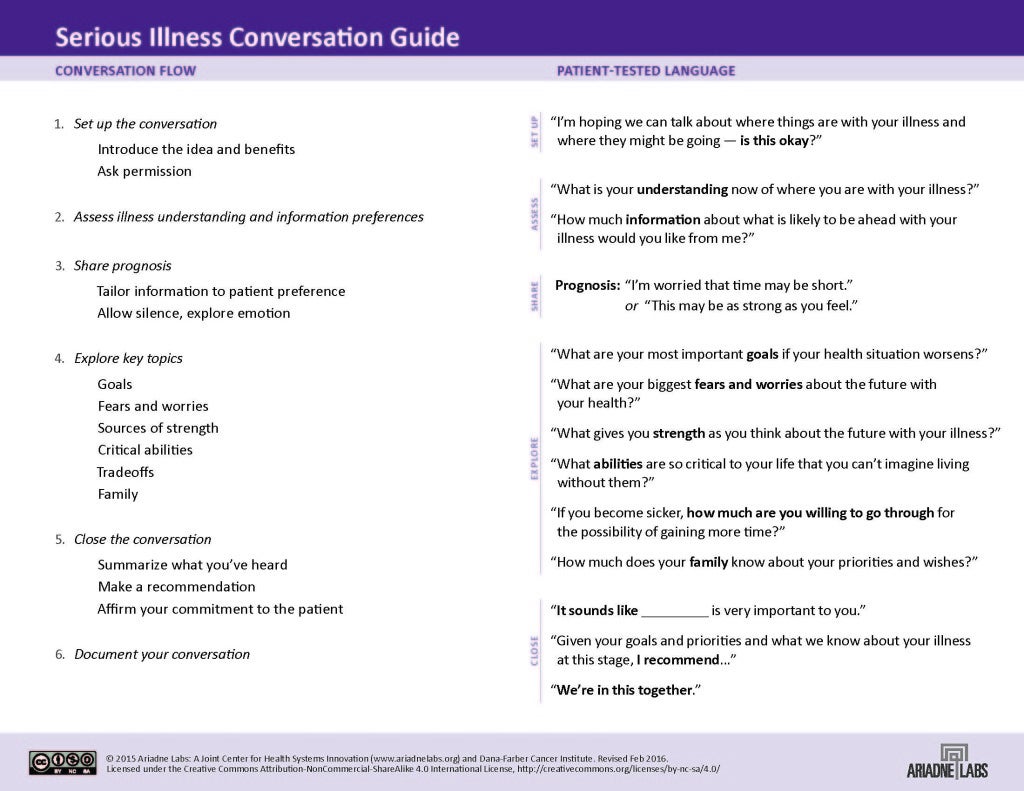

Ariadne Labs recently released a streamlined and redesigned Conversation Guide, the centerpiece of our Serious Illness Care Program. Serious Illness Care Program Director Dr. Susan Block shared some insights and background about the purpose of the guide and its redesign.
Q: What is the Serious Illness Conversation Guide?
A.: The Serious Illness Care Program supports systems and clinicians in having more, better and earlier conversations with seriously ill patients about the goals, values and priorities that can shape their future medical care. The Conversation Guide is a key tool in the implementation of the program. It provides a structure for clinicians to have meaningful conversations with seriously ill patients that elicit important information about what matters most to patients. We’re really excited to share the newest version of the guide.
Q: What was behind the decision to make a change to the guide?
A: The conversation guide should be evidence-based and user friendly. This version, like those before it (more than 100), reflects our ongoing research and systematically collected feedback from trainers and users of the guide over the last few years. We’re so grateful to members of our Serious Illness Care Community of Practice for the targeted feedback they provided in shaping the newest version of the guide. This will not be the last version of the guide, but we think that this version is easier to use, easier to teach and more flexible to use in practice.
Q: How is this version different?
A: This version reflects our research on the acceptability of the conversation guide in diverse populations. We found that adding a question about strengths – “What gives you strength as you think about the future of your illness?” – makes the conversation more effective. It creates space in the conversation for people to talk about the personal and cultural sources of strength that they can draw from during their illness experience. We’ve also redesigned the overall structure into a more streamlined and integrated conversation flow. There are now three ways to print the guide depending on what works best for a clinician.
Q: What is the same?
A: The basic elements of the guide have not changed. It still provides an evidence-based framework for serious illness conversations, consisting of prompts for the conversation flow and patient-tested, open-ended language.
Q: What’s the best way for clinicians to use this guide?
A: The best way to use this guide is in the context of a systems-based approach to improving serious illness care. We believe that training in the use of the guide will help you learn how to better handle the common issues that arise in these conversations, and to manage the challenges that are part of all serious illness conversations. We also know that a systems approach supports clinicians by helping them identify the patients most in need of these discussions, and putting in place the workflows that help clinicians have them without undue strain and with greatest impact. In practice, we find that patients don’t mind having clinicians refer to the guide at the point of care. Clinicians tell us that using the guide — as written– leads to rich, meaningful discussions with their patients in ways that deeply impact their future care.


